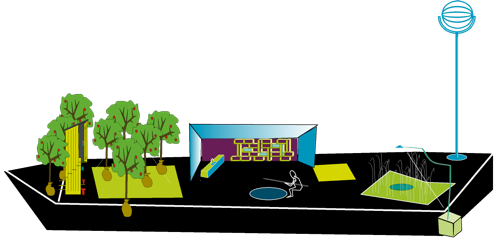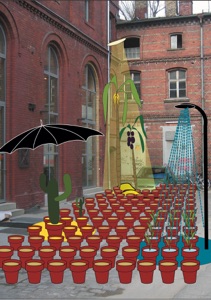
edition 2
Sawa & Monsoon
Rotterdam ´06
edition 1
sahel-sand, aloe-vera & föhn-wind
Rotterdam ´05 / Maastricht ´07 / Antwerpen ´09
edition 3
Birchtree / Bananatree / Cactus
Rotterdam Boymans ,07 / Aedes Berlin `08 ,IBA Hamburg `08 / RIBA London `08 / Hygienemuseum Dresden `09 / Werkstatt Wendorf `11
edition 4
Indulgence Tree
Freiburg ,07 / Rotterdam `08 / Schwerin `09
edition 5
Corn & Black Beans
Rotterdam `08 / RIBA London `08
edition 5‘
Indoor Cornfield
Rotterdam ,05 / Maastricht ,07 / Antwerpen ,09



edition 7
Banana Lamp
RIBA London `08
edition 8
Tomato Lamp
Afrikaandermarkt Rotterdam `09 / STROOM Den Haag `09 / eWerk Schwerin `09
And
DAM Frankfurt ’09 / louisiana Museum Kopenhagen ’09 / eWerk Schwerin ’09 / Hamburg Harburg ’09 / antwerpen Middelheim Museum Luchtbal ’10 / Salone del Mobile, Mailand ’10
edition 11
Tropical Paradise
Aedes Berlin `10
edition 12
Marzipan Paradise
St.Petri Lübeck `11









.. in the morning your free range eggs for breakfast, can be accompanied by subtropical Black Beans which will grow very well, due to climate change, in the British weather of tomorrow. To be prepared for this future, you can manipulate the local circumstances of your plants with a Climate Machine in which your Banana tree will fully grow, long before the climate outside comes to change. But be prepared, as after the subtropics comes the desert - so grow cacti too, to provide a very nice cactus-flower-syrup ...
















a 2nd. version at the Dutch Design Week, Einddhoven 2011

Der PLF (Plants Liberation Forest) ist ein Umerziehungslager für Zimmerpflanzen, die in unseren klimatisierten Wohnungen gefoltert werden: es ist zu heiß, zu kalt, zu zugig, zu trocken, zu nass, zu dunkel, zu hell, zu wenig Platz, ... Wir haben die Pflanzen vergessen lassen, dass sie von einem Baum abstammen, von einem gewaltigen Riesen aus dem Regenwald Amazoniens oder aus dem asiatischen Dschungel.
Ja Natuurlijk/GEM Den Haag 2013

Climate Machine edition 13 PLF Plants Liberation Forest
Venice Architecture Biennale 2008
Climate Machine edition 9 Technical Paradise
Rotterdam Architecture Biennale 2003
a mobile nature preserve BosBus
Middelheim Museum/Luchtbal Antwerpen 2010
TuinHuis

This tendency also provides a home for the works of the Dutch artist Ton Matton. He is an artist who consistently provokes discussion on the condition of the city and the role of the architect and artist as one who works with its substance. Matton shows that the border between architecture and art is fluid. The artist designs installations and small designer objects in which he implements the concept of planning ecological cities. Last year, he published a book entitled ‘Surviving the Suburb’, in which he investigates the possibility of a ‘semi-autarkic’ lifestyle in the suburbs.


Royal Institute of Britisch Architects RIBA Florence Hall, Londen, 2008
the Climate Machines Surviving the Suburb

Raumlabor (Matthias Rick)/Theatre Freiburg, 2008

the Climate Machines special edition Orbist im Wüste

Suburban Ark
Rotterdam Architecture Biennale 2005
SUBURBAN ARK is een drijvend eiland, een ponton waar niet alleen de woning, maar ook de tuin op aangelegd is. Productie van voedsel wordt hierdoor mogelijk, maar ook bijvoorbeeld de drink- en afvalwater kringloop, de energieproductie, een kippenhok, een geit, een ‘viswak’ en een appelboom. Mobiele telefoon, computer en verlichting functioneren prima op een 12 Volts stroomnet gevoed met alternatieve energie van wind, zon, water, etc. De woning kan daardoor een grotere afstand van het vaste land hebben, is er ook niet fysiek mee verbonden. Bereikbaar is de woning per boot of over het ijs en daarmee soms dus ook onbereikbaar. Voor nood en calamiteiten is er de helikopter, en anders de voorraadkamer. In deze voorraadkamer is als een moderne variant van Noach’s ark natuurlijk alles in tweevoud aan boord, om in geval van nood te overleven; 2 koffieapparaten, 2 wasmachines, 2 magnetrons, maar ook 2 bussen koffie, 2 zakken suiker, 2 dozen beschuit, 2 pakken waspoeder, 2 kisten boter, etc.
Design Prijs Rotterdam, Museum Boymans van Beuningen, 2007
the Climate Machines Surviving the Suburb



Climate Machines
a series of design to be prepared for climate change


AEDES Gallery Berlin, 2007
Casla Almere 2014 / Botschaft Berlin, 2015
Type EW58/08

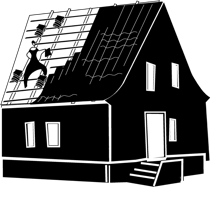
NAi Maastricht, 2007
Edible City

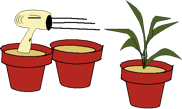
more
pictures
more



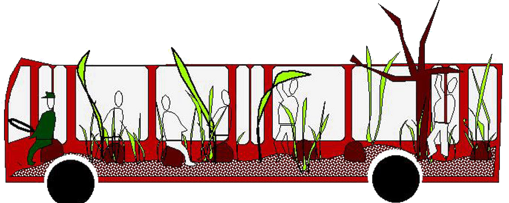
more
more
more

The tropical rain forest took millions of years to develop into the relatively stable system it is today. Its trees, plants, insects and birds evolved to occupy their own specific niches, and they all form part of a finely tuned ecosystem. In the city, this process has had no more than a hundred years to take place.The first pioneers are still struggling daily to win suitable places for themselves in the highly specific urban ecosystem.
Surviving the Suburb deals with the future os our cities. Since the Global Village and the Global Heating are changing our world constantly, how can we build within these uncertainties?
The Climate Machine is an optimistic research-machine. Not the climate change, but how the society reacts is the issue of research and debate. The transformation of our west-world-oriented city-model towards a metropol with a global character. In Surviving the Suburb, this is made concrete, how can the living in a neat suburb be related with the contemporary global village, were inhabitans from over the world live together/next to each other. People with very differant backgrounds, often originate from the countryside and from the most various climate-zones. These people have experience in specific climate circumstances, it’s just that our urban structures and public space have not.

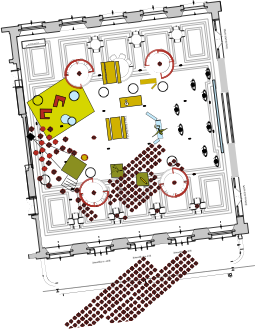

Die urbane StreuObstWiese ist eine Forschungsinstallation mit Apfelbäume. Die Bäume stehen im Topf und hängen am Tropf, versorgt mit Dünger, Wasser und Licht, damit sie nicht abhängig sind von Wetter oder vom grüne Finger der Urban Gardener.
Food Revolution 5.0 / KGM Berlin 2018



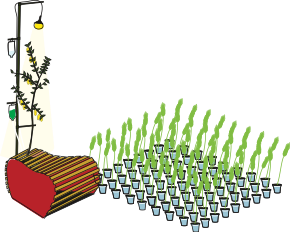
Climate Machine edition 14 urbane StreuObstWiese
more












